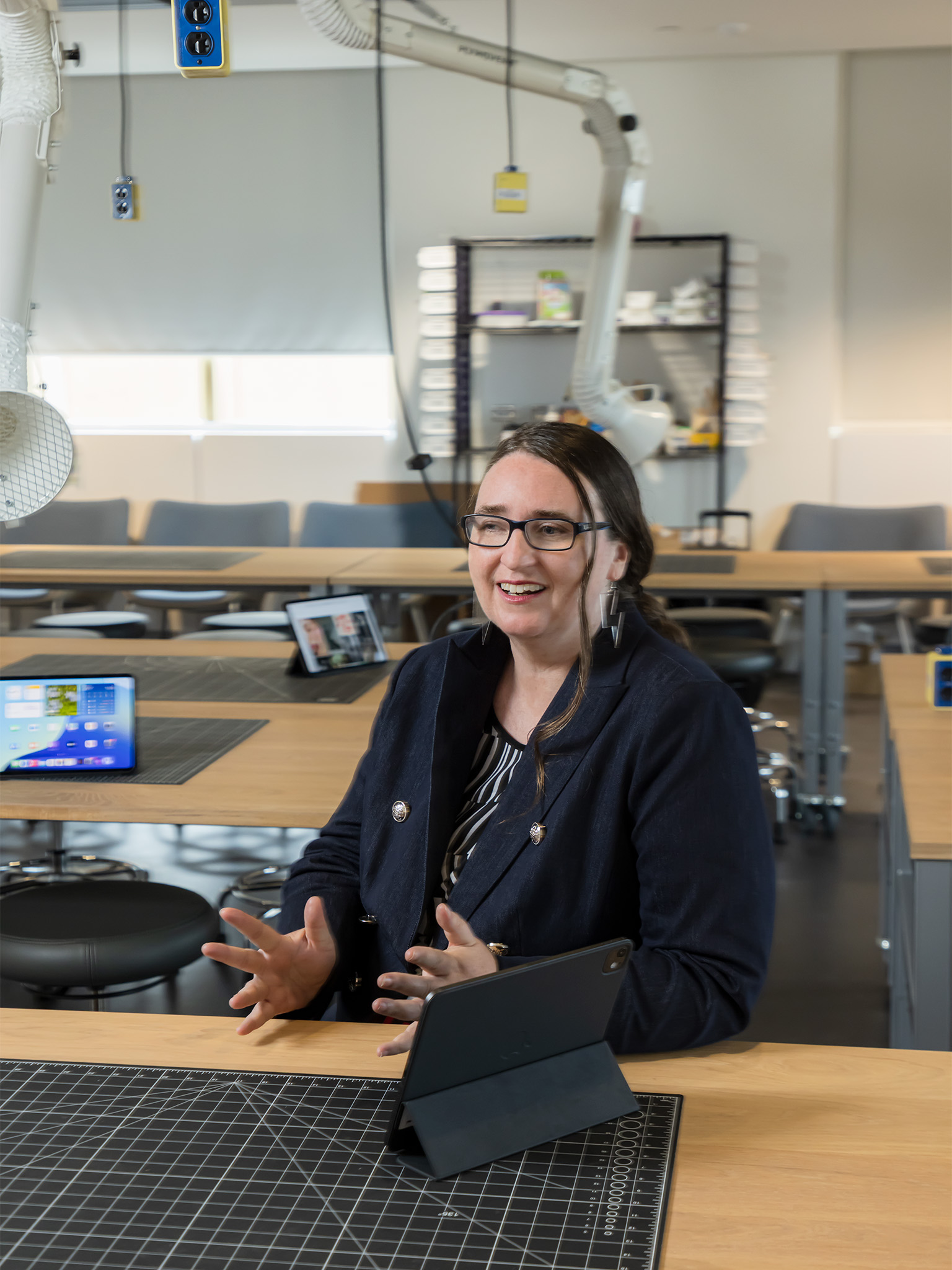View
The Future of Creativity
by Deirdre Kelly
photography by Horst Herget
On a weekday afternoon at York University’s Markham Campus, the creative process looks different than it did a decade ago. Laptops hum alongside sketchbooks as students in the Creative Technologies program coax images and sounds from generative AI tools. The results are sometimes dazzling, sometimes confounding, and always up for debate.
Professor Rebecca Caines, who teaches the Creating with AI course, has made that debate central to her classroom. The syllabus doesn’t just cover how to prompt an algorithm; it asks students to consider what’s at stake when machines enter the studio. “We studied the ethical implications of the tools, and the activities of the major players in the industry,” Caines says.
“We discussed issues like environmental impact, bias, copyright, deepfakes and disinformation, skills loss, devaluing of creativity, and low-quality output at scale – as well as more existential concerns of AI taking over and humans losing control.”
Assignments reflect this dual focus. Students might record a podcast that weaves their own commentary into an AI-generated script, or write an essay with the help of a chatbot – then critique the process. Caines has noticed that the main hurdle isn’t technical. “The biggest issue was getting students to explore the potential rather than getting hung up on the tool limitations,” she says.

The classroom conversations rarely end with consensus. Some students see AI as a new kind of collaborator, opening doors to forms of expression they hadn’t imagined. Others remain skeptical, wary of what’s lost when creativity is filtered through code. For now, Caines and her students are content to sit with the uncertainty. ■